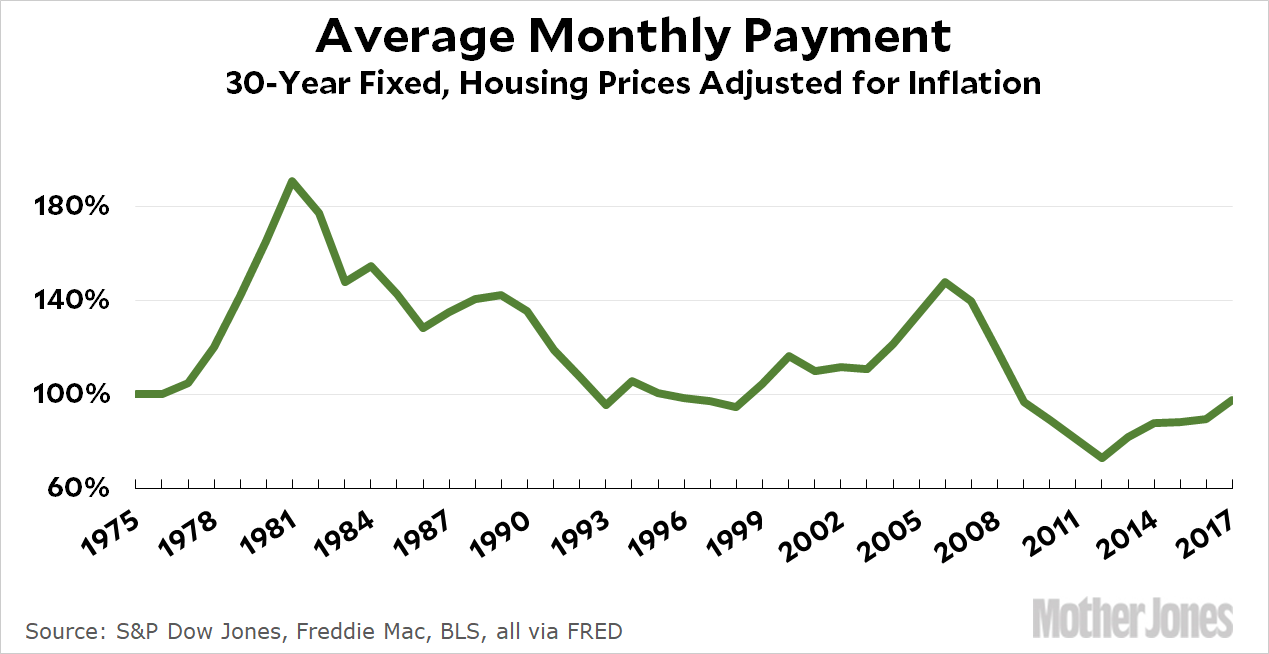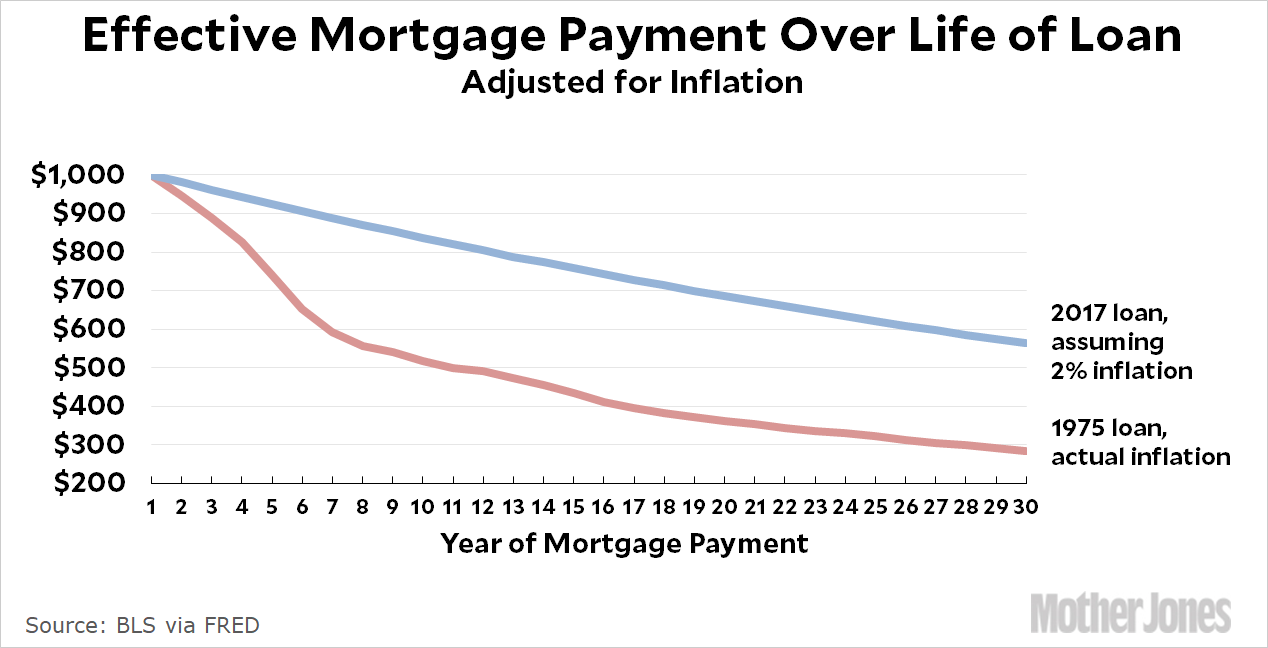I got some legitimate pushback on my post yesterday about housing prices. After all, what counts isn’t so much the price of the house, but the monthly mortgage payments. So if interest rates have been declining, maybe that makes up for the increase in housing prices?
With a couple of caveats, that’s pretty much true:

Roughly speaking, in 1975 the average house cost about $120,000 (in 2017 dollars) and mortgage rates were running around 9 percent. This produces a monthly payment of about $1,000.
In 2017 the average house costs about $200,000 and mortgage rates are running around 4 percent. This produces a monthly payment of about $1,000. So millennials aren’t really any worse off than their parents.
But here are the caveats. First, inflation was running a lot higher in the past. The chart above shows the initial monthly payment, and it really is about the same as it was in 1975. However, back in the day you could go ahead and squeeze your lifestyle for a while, knowing that inflation would steadily erode the monthly payment. Within a few years, it was likely that your payment would be the equivalent of $500 per month.
You can’t do that now. Inflation is so low—and likely to stay low—that your payments won’t erode much at all. That $1,000 nut is going to stay close to $1,000 for the entire life of the loan. Here’s how this works out for a $1,000 monthly payment:

Second, down payments don’t depend on interest rates. If housing prices have nearly doubled, then so have down payments. Young adults today have to scrounge up nearly twice as much ready cash for a down payment as their parents did.
I don’t really know the best way to account for this. Obviously things vary from place to place, but generally speaking: (a) millennials need nearly twice the down payment their parents did, and (b) they can’t count on their loan payment quickly becoming a much smaller share of their income. That doesn’t show up in a simple number for the initial monthly payment, but it’s still very real. No matter how you slice it, it’s just plain harder to afford a house today than it was in 1975.

















